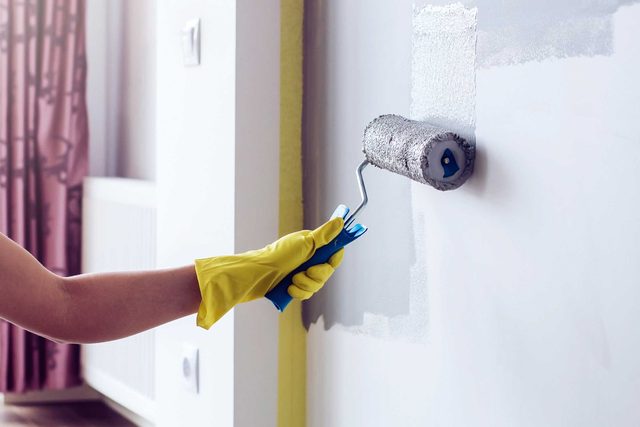
Choose this color first
Choosing a color scheme for your entire home sounds like a monstrous task. Simplify it by starting with just one room. It helps if the room you choose is somewhat of a focal point in your home, but it doesn’t have to be. It could be the first room people see when they enter your home, it could be the largest room in your home, or even just the room you want to paint the rarest and the boldest color. Start where you feel inspired, and build out from there.
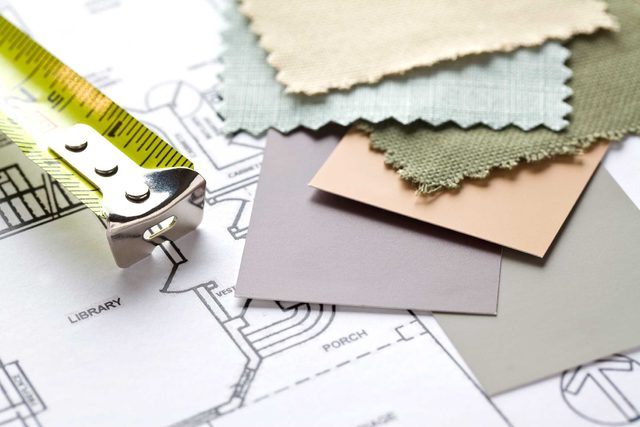
Find a feature piece
Now that you’ve chosen a room to begin with, consider the colors of items that already fill the space. Is there a gorgeous painting on the wall? A stunning carpet? A colorful tile backsplash or a patchwork quilt? Find one color that you love and make it your base color. Note: That doesn’t mean it has to be your wall color. A base color is just a color that you definitely want to include. Here are room design tips interior decorators won’t tell you for free.

Consider the color wheel
Now that you’ve got your base color, it’s time to build out your palette. For this, you’ll need a color wheel and a paint deck. Using these tools, you can create three types of color schemes: monochrome, complementary, and neutral. A monochrome color palette will consist of several colors that are similar to your base color. Perhaps a light green, a deep green, and a bright green. Use your paint deck to find your base. Then choose three colors around it to create a balanced palette. A complementary color scheme consists of colors that are opposite each other on the color wheel. For example, if your base color is blue, its complement is orange. A neutral scheme keeps your room versatile and allows your base color to stand out as a dynamic focal point. Think soft greys and airy creams.
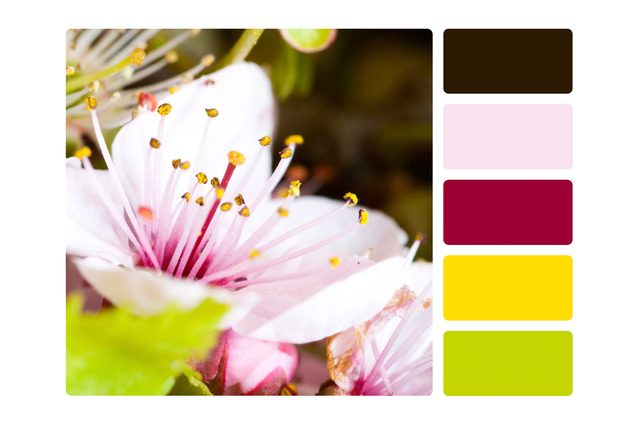
Or take a cue from nature
If you’re starting with a blank slate, look to nature for creative color combinations. Tools like Color Hunter allow you to upload a photo and develop a color scheme around it. Bring the outside in and you’ll always feel relaxed.

Consider how a color makes you feel
Along with helping your home look gorgeous, colors also have an enormous impact on how we feel. Blue relaxes us, orange invigorates us, green boosts creativity, and yellow puts us into a cheery state of mind. Make sure the colors you choose for a room match the goals you hope to accomplish there. Learn more about color psychology here.
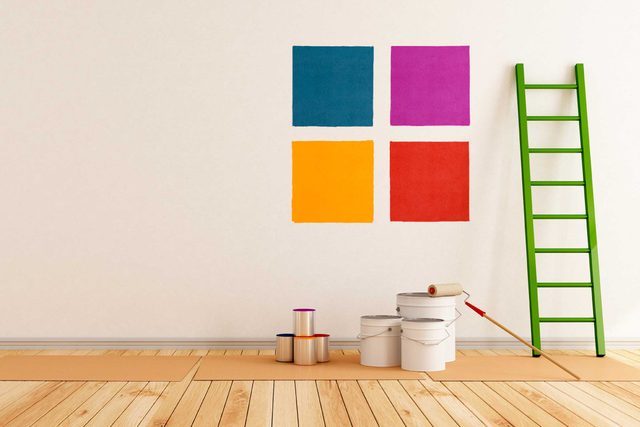
Try it out
Before painting an entire room, test out the paint color you plan to use—the color or finish could look totally different on one side of the room, or just seem a bit off in bright sunlight. “Lighting is key,” Mary Nolte of Kaleidoscope Color Consulting told houzz.com. “Paint two coats of large swatches, at least two feet by two feet, in a light corner and a dark corner, and look at them at different times of day, with the natural light and lit up at night. Also, move key pieces of furniture near the swatches to see how they look together.”
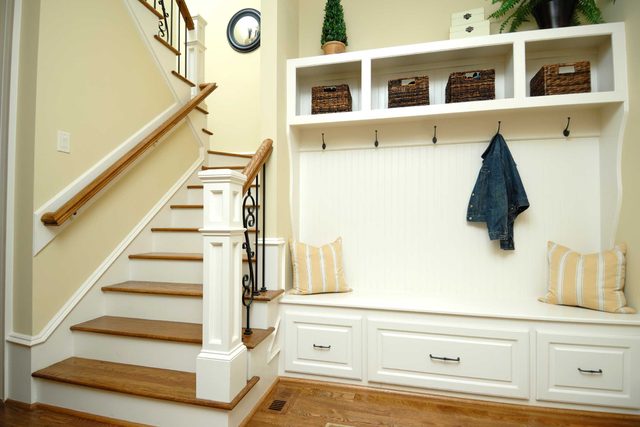
Color from there
As you move away from your focal point room, consider which rooms you can see from it, and make sure the colors you choose for those rooms won’t clash. While it’s unnecessary for every room to match, there should be a sense of cohesiveness. For transitional spaces, such as hallways and staircases, go with a neutral color. That way, the eyes have a chance to rest, and color can seamlessly flow from one room to the others.
